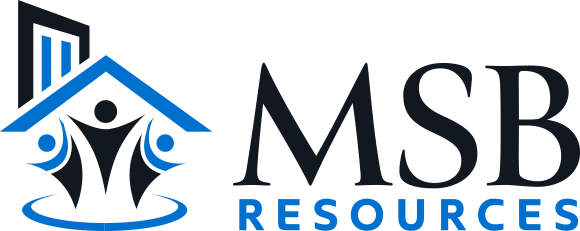In today’s competitive multi-family housing industry, identifying and nurturing high-potential employees is crucial for maintaining a competitive edge. This process ensures a strong leadership pipeline for future growth, helps retain top talent by providing clear career paths, and is vital for organizational success and effective succession planning. By recognizing and developing top talent within your organization, you improve overall company performance and reduce costs associated with external hiring for leadership positions.
The impact of this approach is not just a theory but a widely recognized truth in the industry. A recent survey found that 98% of respondents agree that identifying high-potential employees is crucial. However, only 55% of companies have formal high-potential (HIPO) programs in place, leaving organizations with a significant opportunity to gain a competitive advantage. By implementing structured approaches to identifying and developing their future leaders, organizations can significantly improve their performance and foster a culture of continuous learning and improvement, thereby enhancing employee engagement.
Challenges and Misconceptions in Identifying High-Potential Employees
Identifying high-potential employees in the multi-family industry is fraught with challenges. Many organizations struggle to distinguish between high performance and high potential, balance current performance with future capabilities, and measure intangible qualities like leadership and adaptability. With only 14% of HR professionals expressing confidence in their high-potential program selections, it’s clear that ensuring consistent evaluation and avoiding bias are ongoing issues.
Common misconceptions further complicate this process. Many assume all high performers are automatically high-potential employees or equate technical expertise with leadership potential, often overlooking quieter employees. Some focus solely on current job performance, neglecting ongoing development needs. These misconceptions contribute to concerning trends: 28% of mid-level leaders need more development, and 27% report a non-diverse leadership bench.
With 24% of organizations admitting their leadership approach needs to better prepare for the future of work, there’s a clear need for improvement. To address these challenges, we’ll explore five key methods for identifying high-potential employees and provide actionable strategies for a more effective and inclusive process.

1. Evaluating Performance Beyond Metrics: Identifying Initiative and Impact
While quantitative data like sales figures and task completion rates are important, they don’t capture an employee’s full potential. Qualitative factors often indicate readiness for advancement, including leadership skills, problem-solving abilities, and adaptability. A Harvard Business Review study found that companies using both qualitative and quantitative metrics saw a 23% increase in employee engagement and a 17% reduction in turnover.
Initiative and impact are key predictors of future leadership success. High-potential employees often exhibit proactive behaviors such as:
- Taking on additional responsibilities without being asked
- Proposing and implementing process improvements
- Mentoring colleagues voluntarily
- Pursuing relevant professional development opportunities
Managers should assess the tangible impact of these actions, evaluating how they contribute to team goals and company objectives. To effectively identify high-potential employees, observe problem-solving approaches in complex situations, and recognize those who consistently seek learning opportunities. Notably, organizations that employ both subjective and objective metrics in their evaluations see a 30% increase in performance evaluation accuracy.
By evaluating performance beyond metrics and identifying initiative and impact, organizations can more effectively pinpoint their high-potential employees, fostering a culture of growth and innovation in the multifamily industry.
2. Assessing Adaptability and Learning Agility in a Changing Industry
As the multi-family sector embraces new technologies and market demands, adaptability has become a crucial trait for high-potential employees. Learning agility—the ability to learn from experience and apply knowledge to new situations—is vital for navigating challenges effectively.
Key indicators of adaptability include embracing new technologies, quickly adjusting strategies to market shifts, and seeking diverse experiences. To evaluate this trait, managers should observe how employees respond to unexpected challenges, such as sudden changes in client requirements. Assessing performance in cross-functional projects, like a property manager collaborating with the marketing team on a resident retention program, can also reveal adaptability.
Organizations can foster adaptability by creating opportunities for diverse work and calculated risk-taking, such as involving a leasing agent in developing a virtual tour program. Providing resources for continuous learning further supports the development of learning agility. Notably, highly adaptable employees are 2.5 times more likely to be high performers, underscoring the importance of this trait in identifying potential leaders in the multifamily industry.
3. Recognizing Leadership Potential and Influence Among Peers
In multifamily recruiting, leadership potential goes beyond high performance. It encompasses managing diverse teams, handling conflicts effectively, and driving property performance. Identifying these traits early is crucial for developing future leaders within the organization.
Look for informal leadership behaviors that often indicate high potential:
- Teammates frequently seek their guidance
- Taking the initiative in property-wide projects
- Effectively delegating tasks during busy leasing seasons
Assessing influence and team impact is equally important. Evaluate an employee’s networking and conflict resolution skills and measure team productivity under their guidance. Gathering feedback from team members and residents can provide valuable insights into an employee’s leadership capabilities.
To develop and evaluate leadership skills, provide opportunities for employees to lead cross-functional projects, and assess the quality of their decision-making and how well it aligns with organizational goals, such as proposing upgrades that improve resident satisfaction and property value.
4. Gauging Emotional Intelligence and Cultural Fit
In property management, emotional intelligence (EQ) plays a crucial role in leadership and team dynamics, especially in resident interactions. EQ is the ability to recognize, understand, and manage emotions in oneself and others. High EQ indicators in property management include:
- Self-awareness and emotional regulation during high-stress periods
- Empathy in handling resident concerns
- Effective conflict resolution between team members or residents
Assessing cultural fit is equally important. Look for alignment with company values and mission, adaptability to company norms and work style, and positive contributions to team morale. Observe interactions with colleagues, residents, and clients to evaluate EQ and cultural fit. Analyze responses to challenging situations, such as handling a difficult resident complaint or a maintenance emergency.
The impact of high EQ and strong cultural fit on team performance is significant, leading to improved communication and collaboration in property management teams and enhanced problem-solving in day-to-day operations. To develop EQ and reinforce cultural fit, provide EQ training focused on property management scenarios and foster a culture that values emotional intelligence in resident and team interactions.
By prioritizing emotional intelligence and cultural fit in identifying high-potential employees, multi-family organizations can build stronger, more cohesive teams capable of delivering exceptional resident experiences.
Related: How to Screen Candidates for Cultural Fit
5. Collecting and Analyzing 360-Degree Feedback
Implementing 360-degree feedback in property management provides a comprehensive view of an employee’s performance and potential. This method gathers input from supervisors, peers, and subordinates and includes self-assessment. Effective feedback should focus on behaviors and competencies relevant to property management leadership, such as team leadership, resident satisfaction, and property operations.
When implementing 360-degree feedback:
- Select appropriate competencies (e.g., communication, problem-solving, adaptability)
- Use digital tools for efficient data collection
- Provide guidance on giving constructive feedback
Analyze feedback by identifying patterns, comparing self-perception with others’ perceptions, and creating individualized development plans. Address potential biases and ensure feedback is actionable and future-focused.
A study found that 40% of designated high-potential employees (HIPOs) were below average in leadership effectiveness, underlining the importance of comprehensive evaluation methods like 360-degree feedback in accurately identifying and developing future leaders in multifamily organizations.
Final Thoughts: Cultivating a High-Potential Pipeline for Sustainable Success
Identifying high-potential employees in the multi-family industry requires a multifaceted approach. Organizations can build a robust pipeline of future leaders by combining performance evaluation, adaptability assessment, leadership recognition, emotional intelligence gauging, and 360-degree feedback.
The long-term benefits of effective high-potential identification are significant. It leads to improved succession planning, increased employee engagement, and enhanced organizational agility, which are crucial for sustainable success in the ever-evolving multi-family housing sector.
Ready to identify your high-potential employees? Let MSB Resources help. Contact us to get started today. Together, we’ll build your pipeline of future leaders and ensure your organization’s continued success in the competitive multifamily industry.


